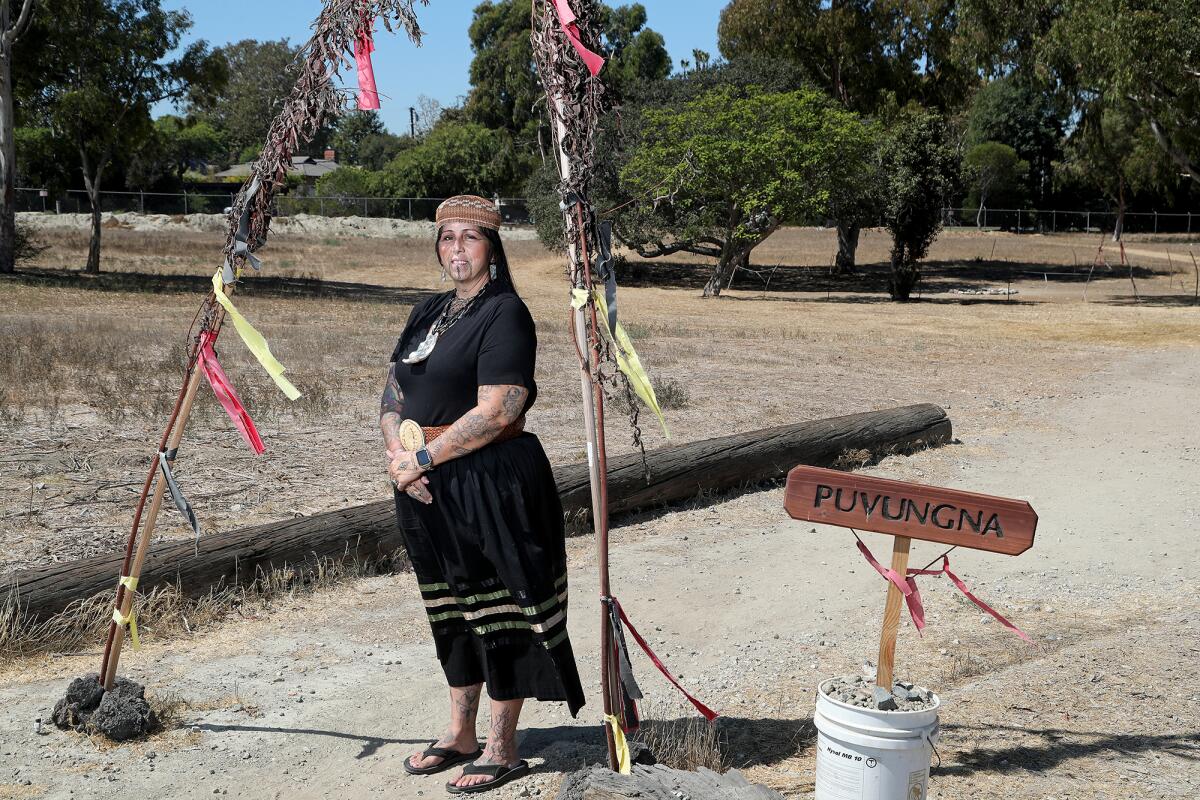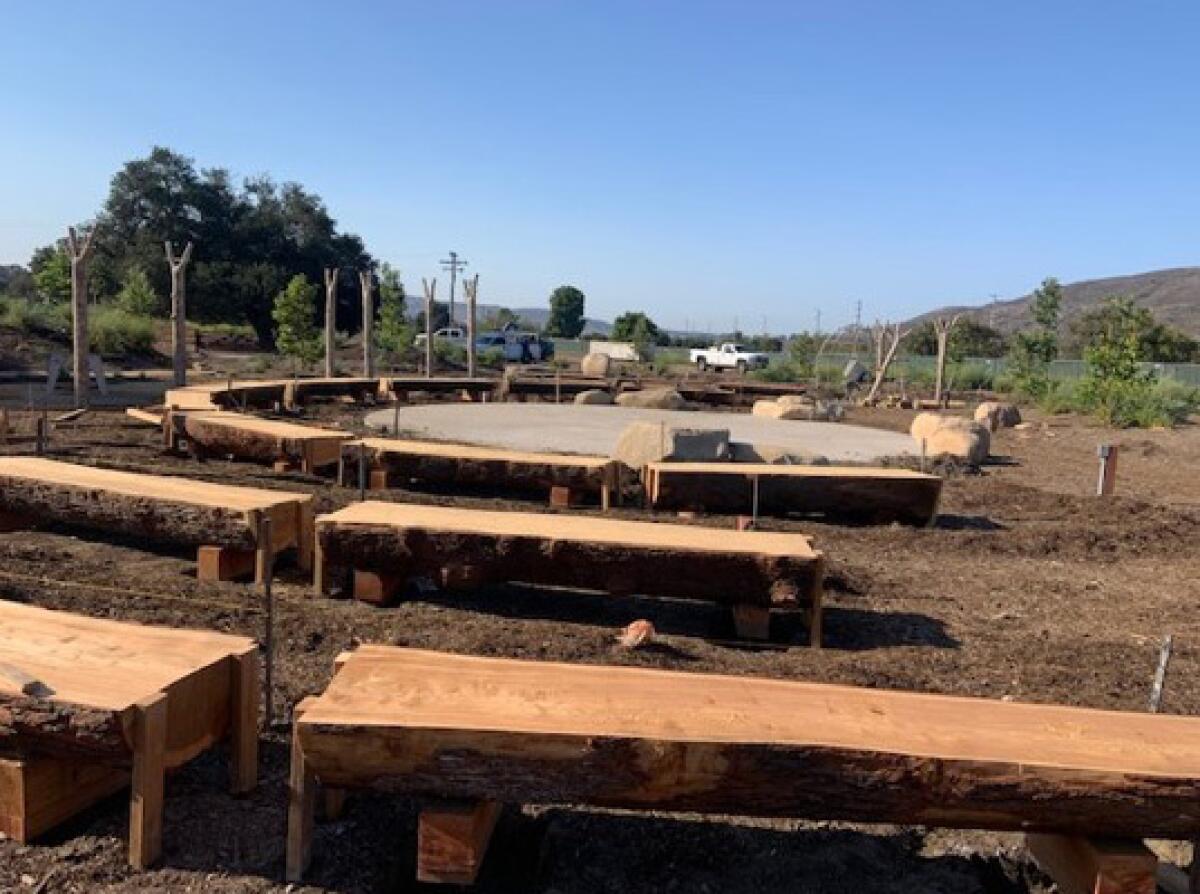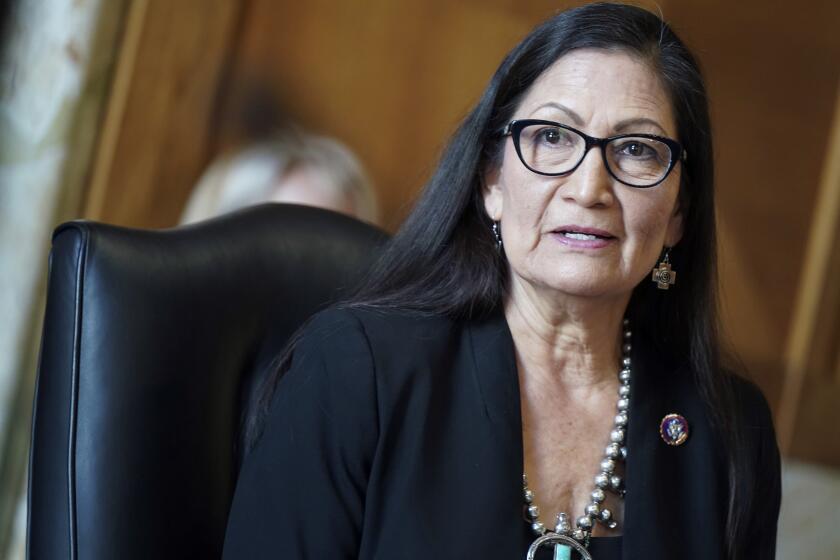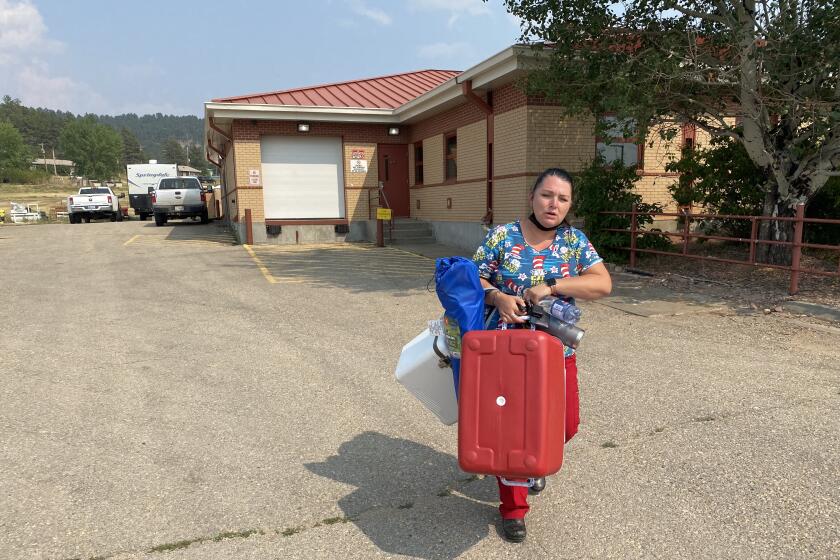New tribal leader hopes to help first people of O.C. in long battle to gain federal recognition

For more than 30 years, the Juaneño Band of Mission Indians in Orange County has been fighting to gain federal recognition.
For a tribe with limited resources, the pursuit has been difficult. But with a new leader at the helm, the goal may be within reach.
For the record:
12:13 p.m. Sept. 24, 2021For the Record: An earlier version of this story said that the federal government didn’t acknowledge that current descendants are from the historic tribe. The story has been corrected with the information that the federal government recognized that most but not all of the tribal members were descendants of the historic tribe.
Heidi Lucero, the new chairwoman of the Juaneño tribal council, believes she has the skills to lead the tribe forward. Lucero and the rest of the council were chosen by members as part of the tribe’s election process, which occurs every four years. Council members took their seats in July.
Lucero said gaining federal recognition is one of the tribe’s primary goals, but it is an intensive, years-long process. Thousands of pages of research need to be compiled and submitted to the government for evaluation.
In 2011, the tribe was denied federal recognition. Lucero said the government acknowledged the tribe as historic, but it didn’t acknowledge that current descendants are from the historic tribe.
Indigenous leaders have long asked the U.S. to take accountability for severing children from their families, language and religion.
Lucero said because the tribe doesn’t have federal recognition, it doesn’t have legal hold to anything it discovers at sacred sites. Federal recognition would empower the tribe to gain control of those artifacts and would give children the right to apply for federal grants. It would also give the tribe a land allotment that members could live on and use for sacred ceremonies.
“For a lot of our elders, what it means is that the government is actually acknowledging that we exist,” Lucero said.
The tribe is appealing the denial and putting together a new petition, which will take years to compile.
The process doesn’t favor tribes. The federal government has used the Certificate of Degree of Indian Blood to determine tribe enrollment and eligibility for government benefits. That certificate is determined through blood quantum, which is a measure of the amount of Native American blood in a person. It’s a controversial system some claim is a way for the federal government to rid itself of its responsibilities to the Native American community, as more people have children with people of other races.
“Throughout history, blood quantum was used to define a point at which responsibilities to tribes, entitlement programs, treaty rights and reservations would end,” Maya Harmon wrote in a legal article in the California Law Review. “The government hoped that using blood quantum would eventually eliminate Native peoples — that intermarriage would ‘dilute’ the amount of ‘Indian blood’ in the population, causing descendants of Native peoples to become indistinguishable from the rest of the population.”
Some tribes adopted the system, but others use different methods to determine tribal enrollment. Lucero said her tribe is moving toward using lineal descent, which requires that members link to a historic village and ancestor genealogically. Thus, members have to comb through historic records such as birth certificates, death records or marriage certificates.
Lucero’s experience as a researcher primes her for leading the effort. She is a phlebotomist with Kaiser Permanente and has a master’s degree in anthropology, with an emphasis on cultural anthropology and California archaeology, and another master’s degree in cultural sustainability.
Distrust of the U.S. government could have led Native Americans to shun COVID-19 vaccines. Instead, they have the nation’s highest vaccination rate.
“I think that my background would be a plus in really being able to research ... and find all that material,” Lucero said. “Because I have a good deal of knowledge about the tribe — the ceremonies of the tribe, language and everything that makes us unique as a tribe — I think that is what makes me qualified.”
Lucero served in 2013 as a member-at-large on the tribal council and later as a cultural resource director for the tribe. This is her first time as chairwoman.
As a cultural resource director she monitored construction sites for artifacts or human remains that could be important to the tribe. The 405 Freeway widening project was paused in 2019 after Native American remains were found during excavations.
“We just make sure that if something is discovered, we stop the project in order to make sure we take care of our ancestors,” she said.
Another major focus for Lucero will be regaining the tribe’s nonprofit status, which was suspended about a decade ago after the prior leadership failed to file taxes, so it can receive grants.
The tribe also can’t bring in money through donations and fundraising until the suspension is lifted. Lucero said the tribe has about six months in reserves, but she would like to have at least a year’s worth.
Lucero is also excited for the upcoming opening of the Putuidem Village in San Juan Capistrano, where the Juaneño are headquartered. For years, the Juaneño have fought for this sliver of land dedicated to their history and tradition.

The sacred sites of the Acjachemen descendants, whose history traces back thousands of years, have been plundered, desecrated and devoured by development. The tribe became known as the Juaneños after Spanish colonialists built Mission San Juan Capistrano in 1776. Today it has about 1,800 members.
The Putuidem Village was seen as a long-sought tribal victory when the San Juan Capistrano City Council approved the educational park in 2016. But in ensuing years, the city delayed the project, and tribal leadership questioned whether the park would ever be completed.
Though it was expected to open as early as 2019, the Putuidem Village was stalled by various financial obstacles. It is now expected to open this year.
Tribal leaders have said the park could be an important tool for educating the public and a vital gathering place for tribal members, where they could perform ancient rituals. Some tribal members have been waiting for a piece of dedicated land for decades. The 1.5-acre park will include an amphitheater area with boulders and log seats; a trail; and various depictions of the Juaneño way of life, including ramadas, kiichas — a thatch home — and manos, a ground stone tool. The surrounding areas have native plant habitat.
“It was really important for us to make sure that our community still had a piece of that village left that we can go to hold ceremony and pray for those people that lived in that village and had died before we came,” Lucero said. “It’s really important that we always acknowledge that they were there and we’re still here protecting their land.”
Brazil writes for Times Community News.
More to Read
Sign up for Essential California
The most important California stories and recommendations in your inbox every morning.
You may occasionally receive promotional content from the Los Angeles Times.













